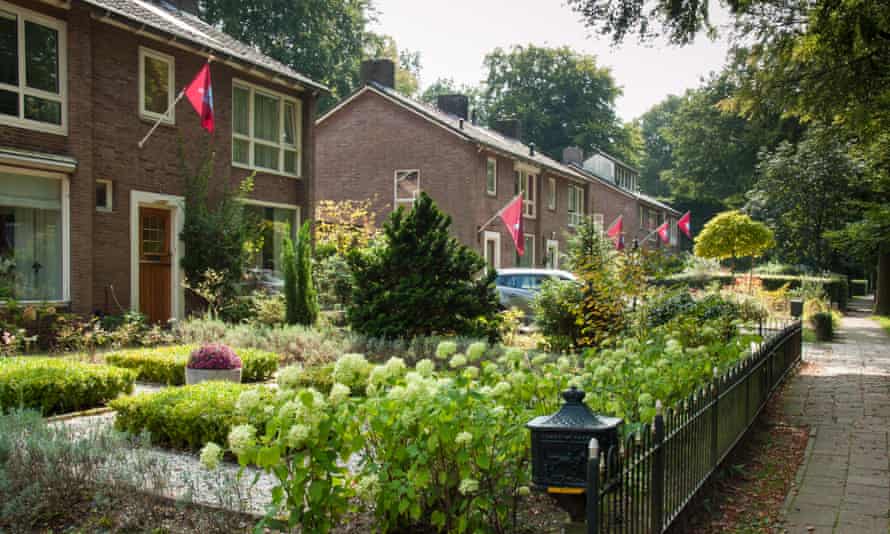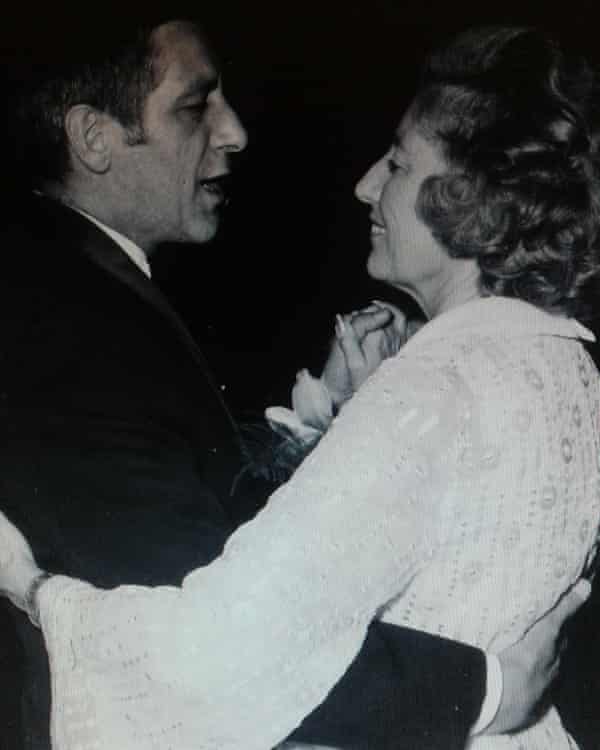At a crossroads on the outskirts of the Dutch village of Oosterbeek is a grand cafe that first opened in 1894, where cups of coffee are served alongside schnitzel and meatballs. First impressions suggest it is a typical Dutch bistro, but Restaurant Schoonoord’s brown-brick frontage hides another story. During the last vestiges of the second world war, the building was set up as an emergency field hospital by the British 1st Airborne Division.
Last summer, I was map-reading at the same spot on the Utrechtseweg-Stationsweg intersection, unaware that a 90-year-old Dutchman was about to transform my day. A blurry blue sky was hanging over the village and I saw him out of the corner of my eye, striding towards me.
“You look lost,” he said, extending a hand and introducing himself as Jan Loos, a retired navy pilot officer. “Let’s get lunch and I’ll show you my home town.”
The war was the reason I was in the Netherlands. In an attempt to make the history more tangible and to better understand the human sacrifice, I had been walking a section of the Liberation Route, a 3,000km (1,865 mile) remembrance trail from London to Berlin, which ties together the storylines of the western allied forces’ advance during the climax of the second world war.

In September 1944, the provinces of Gelderland and North Brabant on the Dutch-German border became the main stage for the fighting in western Europe, and of all the battlefields and remembrance sites to visit along this pathway, the 12-mile stretch between Nijmegen and Arnhem is arguably the richest in historical drama. Here was the frontline on the road to Berlin. Here was the setting for Operation Market Garden, the largest airborne operation in history. Here, too, is where the trail’s origins lie.
And that was where Jan Loos came in. For years, this volunteer at Oosterbeek’s Airborne Museum at Hartenstein has been mapping the stories of the traumatised civilians and lost soldiers of his unassuming home town, around three miles west of Arnhem. The nonagenarian told me he would share his story and show me the places that changed his life for ever. In exchange, I did what I could: paid for his lunch and a glass of beer.

Inside the cafe, Jan related his story. At 14, he witnessed the atrocities when Oosterbeek became an ill-fated focal point of Operation Market Garden. In September 1944, the Nazis had 1,100 guns and mortars set up around his village and they fired constantly, trapping his family – who remained hidden in the basement of their house – without food or water. He was numb from the noise and told me he has never been able to forget the screaming, and sounds and smells of mortar fire.
“When we finally managed to come out days later, there was no part of our house left standing,” he said. “We looked straight up into thin air.”

Another image from that day is imprinted in Jan’s mind: an empty birdcage, spotted among the debris. With that image lingering, he finished his story, remembering how his family stepped into the line of fire and walked down their street with artillery shells whooshing over their heads.
“Oosterbeek had become a ghost town,” he said. “There was dirt, burning vehicles and broken houses. Bodies everywhere.”
Shocked by the visceral account, I had stopped breathing.
Half an hour later, we set out together on a pathway through the parkland and forest to the south. By Jan’s design, we followed the same route taken by the allies during Operation Berlin, when 2,400 soldiers were evacuated across the Lower Rhine in September 1944. Led by Major-General Roy Urquhart, the commander of the disastrous “A Bridge Too Far” offensive, the beleaguered troops made their escape at night-time. We had the warmth of the sun on our backs. Where the forest was at its thickest, Jan said, remains of missing soldiers are still found.

From the treeline to the river, he told me about his decision to join the Royal Netherlands Navy, a career that lasted until his retirement in the 1980s; introduced me to the story of Kate ter Horst, the “Angel of Arnhem”, who tended wounded British soldiers in the refectory of the village’s Oude Kerk, which we passed along the way; and rescued a runaway toddler who’d somehow escaped down the forest path in the wrong direction from his mother.
Lurking ahead, at the foot of a wide field, lay the banks of the Lower Rhine, still but for a single boat puttering between the embankments. If anyone had looked across from the other side, they would have seen an unorthodox couple, together but apart, sharing the common language of silence and respect. Where we were standing, 95 soldiers had been gunned down into the water. Now, there was just us, the Rhine and the inescapable echo of memory.
Rather than dwell on the moment, Jan whipped out his smartphone to show a black-and-white photo of himself, years later and dancing at a Royal Air Forces Association charity ball in Amsterdam. On his arm was Dame Vera Lynn.
And then, my new friend left me to continue on my way. Ahead was Arnhem, the notorious John Frost Bridge and the German border, but before me also lay a slightly different path. For I was no longer just a curious hiker, but a bearer of Jan’s story, able to pass it on and share it on a journey of my own.





